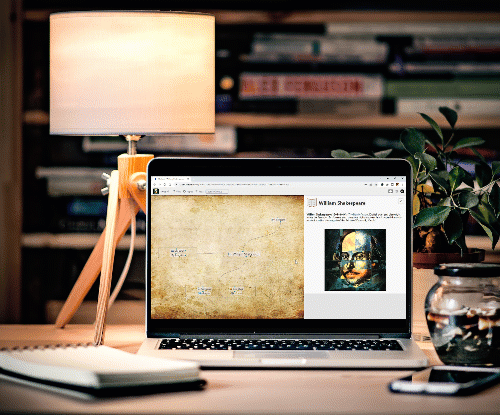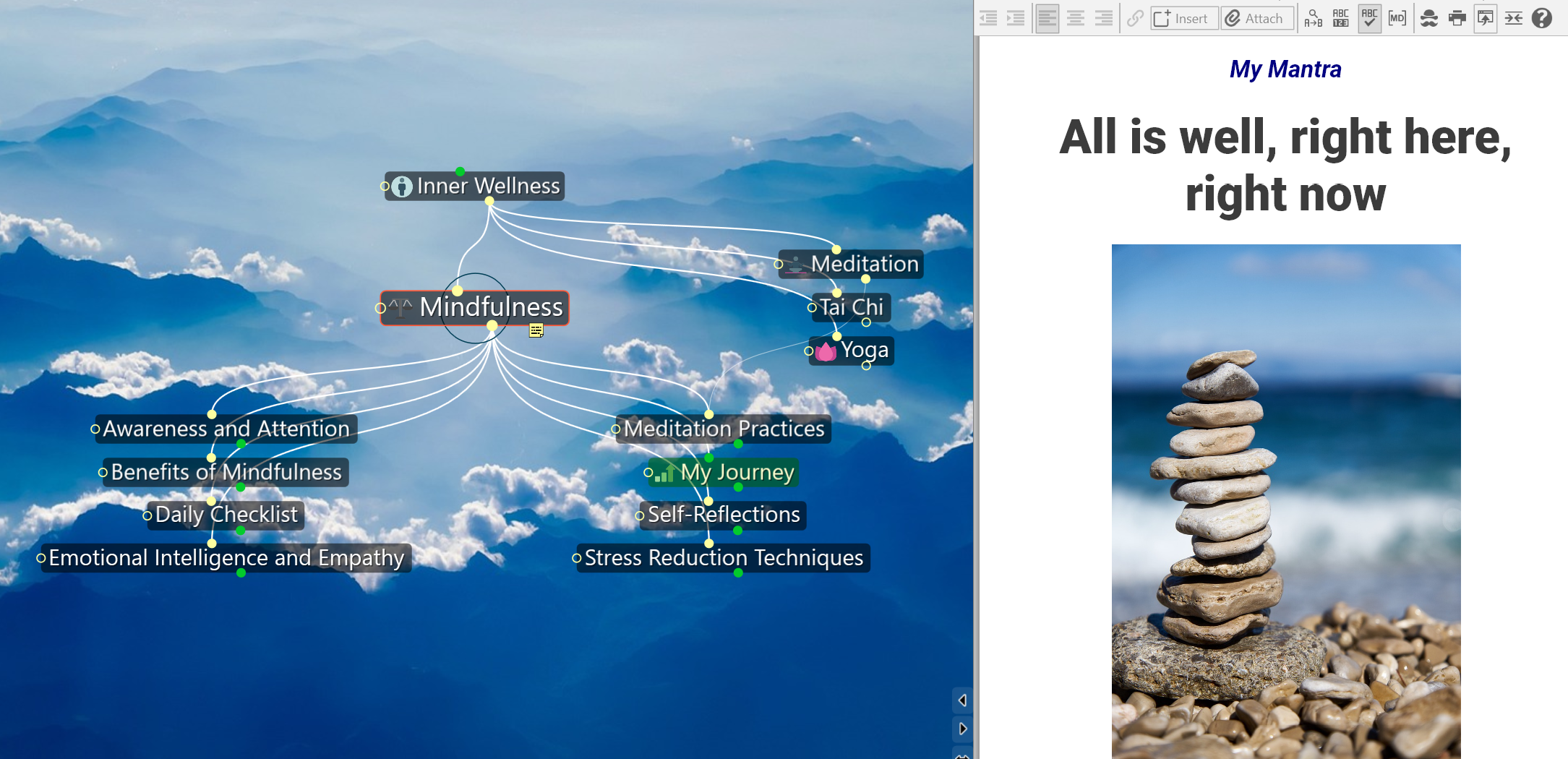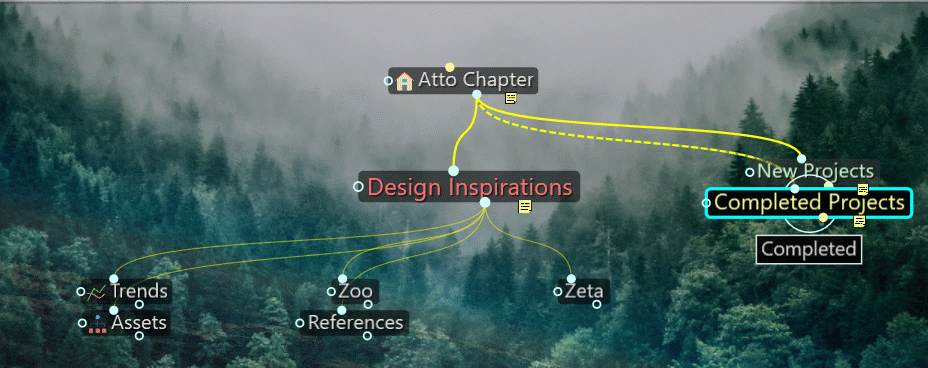
Linking and Tagging Emotions
in Your Second Brain
"Your visions will become clear only when you can look into your own heart. Who looks outside, dreams; who looks inside, awakes."
Carl Jung

Acknowledging and integrating emotions in a tool like TheBrain can greatly enhance the value and effectiveness of your personal knowledge management system. While thoughts and emotions are distinct, they are deeply intertwined in human cognition and can significantly impact how we process and remember information. By capturing and visualizing these emotions, your Second Brain evolves beyond a repository of projects and data to a dynamic map of your cognitive and emotional landscape, providing deeper insights and an enriched understanding of your life.
Here are some detailed ways to incorporate this concept:
Emotional Tagging… Yes, you can, and should.
With thought types and tags in TheBrain you can add a level of classification that has no limits. Thought tags and types work great as secondary attributes on a topic, like how things make you feel. Create emotion tags like joy, inspiration, love, nostalgia, etc. This method can help in recalling information more vividly and can make the process of reviewing notes a more personal and emotionally engaging experience.
Capturing Life's High Points, because you will forget.
And this leads me to the more general effort of capturing life’s high points. I encourage all users to document not just academic or professional information but personal milestones, happy moments, and significant life events. These can be tagged as 'joyful moments', 'milestones', 'love', or 'personal achievements'. By doing this, your knowledge base becomes a repository with personal history and emotional journey. One of TheBrain’s power users Omer Aziz has a very cool thought type in his Brain called “strong moments”. It was something he demoed in one of his webinars several years back and I absolutely loved it because you don’t often think of these special ah ha moments when you peak, so capturing them in your Brain can bring huge personal insights.
Omer Aziz's "strong moments" thought types help him track his peak performance.
Anecdotal Notes, the Juicy Stuff.
Include personal anecdotes related to the information topics. For instance, if you are researching a topic you are passionate about, include a note on why this matters to you personally, how you first became interested, or a memorable experience related to it. Now you may be thinking I already know the answers to this why bother here? Well, like any good journal or picture album these clear luminous events tend to fade with time. Having a digital memory of this stuff becomes a treasure as the years go by.
People-Focused Thoughts and Notes
Create a section in your Brain for people who matter. Include notes about family members, friends, mentors, anyone significant in your life. These notes should capture not just names and contact information but also cool memories, why they are important, and what you have learned from them.
Passion Projects, Always
Your Second Brain is really for everything. Work-related projects and thoughts are critical but don’t forget to add your passion projects. This includes hobbies, volunteer work, or any personal projects. Detailing the journey, challenges, and what one loves about these projects can make the knowledge base more holistic and personally meaningful.

Mood-Focused Reflection
In addition to thought types and tags you can create sections in your Brain that focus on emotional or mood-based content. This gives you the freedom to brainstorm and go deep on an emotive subject. Add areas for your inspirations, motivations, as well as a reflections section. Your notes can have inspiration quotes, images, and more in-depth diary entries.
Jerry Michalski’s Brain contains over 569,373 thoughts and 1,089,688 links. His "Words I love" area offers inspirational words he collects.
Visual Emotional Cues and Aesthetics
You can dramatically alter the mood of your Brain by curating thought type colors and wallpaper. Use visual cues like colors, icons, or images to represent different emotions. For example, red for things you’re passionate about, light blue for calm, reflective thoughts, or yellow for joyful ideas. TheBrain's zoomable icons can be used to instantly mouse over images of events or inspirational photos to get you in the right mood.
In addition to your overall Brain's default wallpaper setting, you can utilize TheBrain’s dynamic wallpaper feature. This enables you to change your background when you click on different thought types. For instance, a "completed projects" thought type can launch an image of a horizon to support the mood of progression. These subtle cues make your knowledge base visually appealing but also emotionally intuitive.

TheBrain’s dynamic wallpaper can by specified for each thought type to reinforce mood or tone of content.
Reflective Prompts to Get Started
Adding affective based tags opens the flood gates for new self-knowledge but sometimes if you have an existing Brain focused mostly on work projects or research you may wonder how to get started. You can start by revisiting past notes and key sections in your Brain with a focus on emotional growth and understanding. Ask yourself questions like “How did this event make me feel?” or “Why is this memory important to me?” Or as mentioned above you may prefer to create a fresh new area to brainstorm in.
By incorporating these elements, your knowledge base becomes a rich tapestry of your life’s passions, emotions, and experiences, making it a truly invaluable personal asset. It transforms into a dynamic reflection of both your cognitive processes and emotional experiences. This enriched approach not only deepens your insights but also creates a more engaging, immersive experience, making your Second Brain a true mirror of your inner self.
Recorded Webinar
Watch our previous Linking and Tagging Emotions in Your Second Brain webinar.







